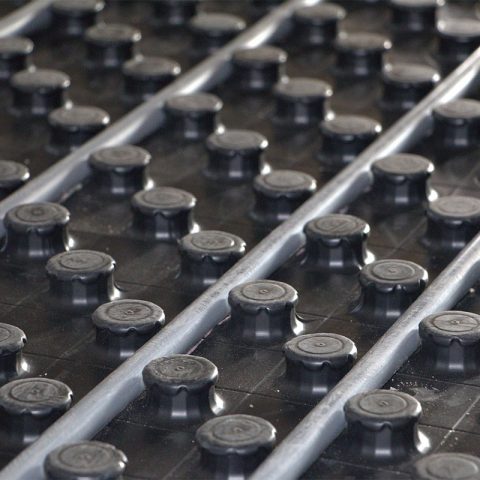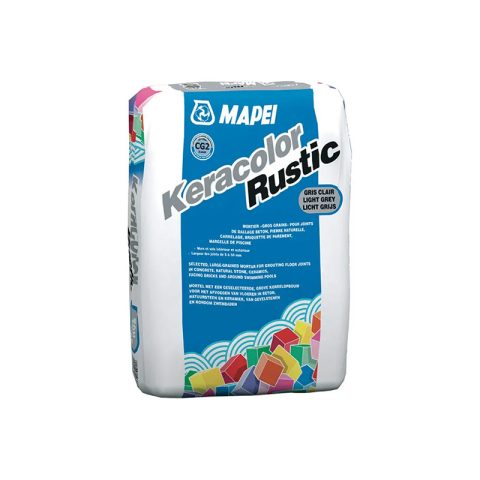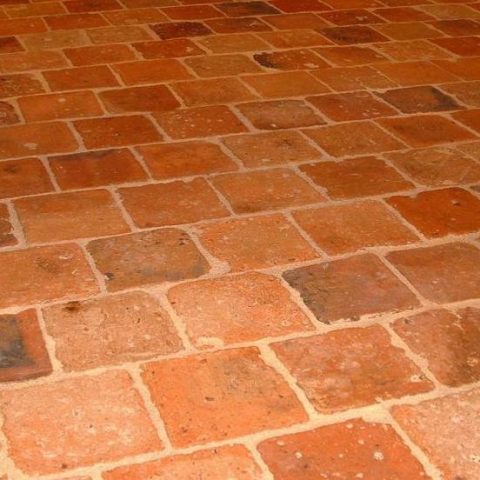What joints are most suitable for terracotta tiles ?
The question combines several subjects in fact:
The grout for terracotta tile joints
Look again at the photos on the BCA stock website of antique reclaimed terracotta laid for our showroom displays. You’ll see that we keep the joints fairly narrow, and that we favour the use of a lime-mortar based grout (off-white / light beige) which corresponds to the era BEFORE the invention of drab grey Portland Cement (20th century). Not that many years ago most French artisans still mixed their own blend of lime mortar and sand, sometimes adding a touch of white cement, and often with more than one type of sand (for colour and grit characteristics). However nowadays they usually purchase bags of prepared grout containing sand in the mix. If you choose a « limestone colour » pre-mixed grout containing sand, that will correspond to the way most of our showroom floors were jointed. We can supply this pre-mixed grout in bags if you want to use what BCA market to French artisans.
The width of terracotta tile joints
Concerning joint width it is good to refer to the origins of these antique terracotta tiles which are reclaimed from a broad variety of buildings undergoing refurbishment. Over the centuries most tiles were laid edge to edge, without any significant grout width, if any. Gaps of a few millimetres here and there would have a creamy lime mix poured into the narrow cracks between tiles. Slight size variation is inevitable with these hand-made terracotta tiles that were fired in wood-burning kilns. They were laid originally taking care to select and adjust them to achieve joints so close that even though they were laid on a bed of lime, sand or a clay mix, they remained stable in position for centuries. Nowadays few folks would spend the time to adjust them to that extent to reduce the joint width to next to nothing, so our advice is to close up the joints as much as is practical.

The joints of terracotta tiles with underfloor heating.
However, particularly when being laid over an underfloor heating system, you will need to comply with your county’s building regulations and laying methods (special adhesive and grout) to ensure they are compatible and permit the validation of the professionals’ guarantee for the heating system.
HAVE A PROJECT IN MIND?


